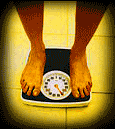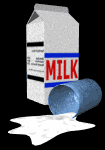WHAT IS FAT?
 Fats are organic compounds that are made up of carbon, hydrogen and oxygen molecules. Of all the macronutrients, fats are the most nutrient dense and concentrated source of energy. Fat contains 9 calories per gram while carbs and protein only contain 4 calories per gram. Fats can be categorized into two main types, saturated fats and non saturated fats. At room temperature saturated fat is solid, while unsaturated fat is liquid.
Fats are organic compounds that are made up of carbon, hydrogen and oxygen molecules. Of all the macronutrients, fats are the most nutrient dense and concentrated source of energy. Fat contains 9 calories per gram while carbs and protein only contain 4 calories per gram. Fats can be categorized into two main types, saturated fats and non saturated fats. At room temperature saturated fat is solid, while unsaturated fat is liquid.
WHY IS IT IMPORTANT?
Fat is very important for proper functioning of the human body. Fat serves as a storage substance for the extra calories we consume. It fills the fat cells that help insulate the body and protects our organs from injury. Our skin's health and hair are nourished by the fat we eat. Fat plays a major role in the bloodstream by absorbing and transporting the fat soluble vitamins A, D, E, and K.
TYPES OF FAT
TRANS FATTY ACIDS
These fats are the ugly ones because what they do to your internal organs. Trans fatty acids are created by a chemical process called hydrogenation. This changes refined oils into margarines making saturated fats more solid at room temperature. It was once believed that this process would create a fat healthier than saturated fat but they were wrong. Trans fatty acids are different from saturated fat even though the human body metabolizes them in a similar manner.
 Sources of trans fatty acids include margarines, hydrogenated vegetable oils and shortenings. They are bad for your health and lifting career because they increase LDL or "bad" cholesterol. They can inhibit your immune system. TFA's increase insulin levels and promotes insulin resistance. This is the major cause of Type II diabetes. They can also lower your natural testosterone level. Stay away from these fats and it will improve your health and your lifting longevity.
Sources of trans fatty acids include margarines, hydrogenated vegetable oils and shortenings. They are bad for your health and lifting career because they increase LDL or "bad" cholesterol. They can inhibit your immune system. TFA's increase insulin levels and promotes insulin resistance. This is the major cause of Type II diabetes. They can also lower your natural testosterone level. Stay away from these fats and it will improve your health and your lifting longevity.
SATURATED FATS
I know what you are thinking, these are bad also. Well, you are right and wrong. Saturated fats are found in animal products including beef, pork, lamb, milk, cheese and eggs. It is true that these fats can cause health problems when taken in excess, especially for those who are not active. These fats are easily turned into increased body fat, when eaten latter in the day. They can raise insulin levels and increase your chances of insulin resistance. They also increase your chance for getting arteriosclerosis and heart disease. So, where are the benefits? A major benefit of saturated fats is that they are essential when trying to gain muscle mass. Ask any serious bodybuilder or powerlifter how much mass they packed on the last time they were on a low fat diet. Even the powerlifters and bodybuilders of yesteryear knew that to pack on some serious strength and size they had to consume saturated fats. Saturated fat and cholesterol also have a direct association with testosterone production. Increased testosterone equals bigger and stronger muscles and decreased recovery time. Even though we have to limit our intake of these fats, it doesn't mean that powerlifters should try to avoid them at all costs, unless they have a medical condition.
MONOUNSATURATED FATS  I know, there seems to be more categories of fat than flavors of Ben and Jerry's ice cream. Monounsaturated fats are one of the major healthy fats. Sources of these fats include olives, avocados, safflower oil, almond oil and extra virgin olive oil. These fats are known to increase the good cholesterol (HDL) and lower the bad cholesterol (LDL).
I know, there seems to be more categories of fat than flavors of Ben and Jerry's ice cream. Monounsaturated fats are one of the major healthy fats. Sources of these fats include olives, avocados, safflower oil, almond oil and extra virgin olive oil. These fats are known to increase the good cholesterol (HDL) and lower the bad cholesterol (LDL).
Monounsaturated fats can help protect against oxidative damage that free radicals cause upon our bodies cells. Olive oil contains oleic acid, which is known to keep your arteries supple helping to prevent hardening of the arteries. Most important, mono's have an influence on testosterone levels, and this is something we all want to maximize.
POLYUNSATURATED FATS
When it comes to fats, these are the ones you want on your side. They are good for your health and will help your performance in and outside the gym. There are two main types of polyunsaturated fats. They are Omega 3's (Alpha-Linolenic Acid), and Omega 6's (Linoleic Acid). These are known as Essential Fatty Acids (EFA's). These can also be sub divided into the following. ALA* can form two other fats including Eicosapapentaenoic Acid (EPA) and Docosahexaenoic Acid (DHA). The two different fats that can be created from LA* include Gamma-Linolenic Acid (GLA) and Arachidonic Acid (AA). Don't worry I am not going to go through every property of these fats I just want you to understand their basic composition and how they can help the powerlifter in his quest for a bigger total. I have outlined the fat composition of different oils in Chart 3A, and the breakdown of categories of which fat they consist of. There are many health and performance benefits of consuming polyunsaturated fats (PUF). Here are just some of the reasons why as a powerlifter you should make these a staple in your power diet.
BENEFITS OF POLYUNSATURATED FATS
- PUF's lubricate your joints by helping them to move freely. They also help reduce inflammation caused by tendonitis, which is something all powerlifters have experienced at least once in their lifetime.
- PUF's play a major role in producing energy from the foods we consume and transporting it throughout our body.
- EPA and DHA are known to increase not only aerobic performance but strength as well. That's a benefit for all powerlifters.
- PUF's have a positive effect on thyroid hormones which means that we will burn fat more efficiently.
- PUF's are responsible for decreased recovery time and reduced soreness from the hard core power workouts we must perform to reach our goals.
- PUF's have the potential to increase insulin sensitivity in muscle tissue and decrease it in fat tissue. This means that our body will more effectively use insulin to transport nutrients such as amino acids, glucose, creatine ect, into our muscle cell where they can increase cell volumization and protein synthesis. At the same time they decrease the fat storing properties of insulin in your favor, helping you to stay leaner.
- PUF's can decrease body fat and help prevent insulin resistance which not only leads to obesity but to Type II diabetes latter on in life.
- PUF's help create a protective barrier around the cell to keep out bacteria and viruses, yet they keep important nutrients like enzymes and proteins inside the cell.
- PUF's have a positive effect on our immune system. We have all experienced a cold or flu just when our training seems to be going great. It was most likely caused from a weakened immune system because of the intense training load we put on ourselves, especially around contest time.
- PUF's help in the formation of hemoglobin. This is very important because hemoglobin is responsible for transporting oxygen to the body's cells.
PUTTING IT ALL TOGETHER
 How can the powerlifter put this new gained knowledge to benefit his training? The main thing we have to assess is what percentage of your diet is coming from fats and which types? Forty percent of the average American diet comes from fats. The major problem with this is that these are sedentary individuals, not seasoned powerlifters. Second, the majority of these fats are obtained from the worst types of fat, mainly the trans fatty acids and saturated fat. The average American diet is usually deficient in the EFA's and monounsaturated fats as well.
How can the powerlifter put this new gained knowledge to benefit his training? The main thing we have to assess is what percentage of your diet is coming from fats and which types? Forty percent of the average American diet comes from fats. The major problem with this is that these are sedentary individuals, not seasoned powerlifters. Second, the majority of these fats are obtained from the worst types of fat, mainly the trans fatty acids and saturated fat. The average American diet is usually deficient in the EFA's and monounsaturated fats as well.
The first thing to do is to eliminate some of the bad fats you are consuming and replace them with good fats. Don't get me wrong, I am not an advocate of low fat diets containing 5-15% of total calories from fat. For the powerlifter, I believe that 30% of your daily caloric intake should come from fat. It should be divided properly among the good types of fat so that it can help you reap the most benefits. Out of your daily fat intake, powerlifters should take 25-35% of your total fats from saturated fats. The majority of the fats should come from Omega 3's, approximately 40%, and the remainder 20-25% from monounsaturated fats. I recommend eliminating as much Omega 6's from your diet as possible, since they are present in many of the foods consumed in the average American diet. When you consume Omega 3's and 6's your body produces eicosanoids. These eicosanoids from the Omega 3's and 6's have different properties and affect the body in different ways. Omega 6's can increase inflammation while Omega's 3 can decrease inflammation. If your diet is higher in Omega 3's and lower in Omega 6's, you will experience less muscle soreness and joint and tendon inflammation. This leads to decreased recovery time between workouts.
Since 30% of your power diet should consist of fat, it should be evenly spread out over your 5-6 meals per day. Don't consume fat directly after your workout. This will slow down the absorption of protein which is something you want to avoid after a workout. Do not try to consume only one type of fat at a time. Try to combine your mono's with your poly's to get a proper balance between the healthy fats. One example is to put one tablespoon of flax oil and olive oil in your protein shake. Your best sources of Omega 3's would be flax oil and concentrated DHA/EPA oil from fish. Salmon is one of your best sources of Omega 3's especially DHA and EPA. Consuming at least one source of fatty fish daily will help supply those important Omega 3's. For your mono's, extra virgin olive oil, avocados and macadamia nuts are your best choices. Make sure to consume healthy fats with your meal prior to sleeping. This will prolong the release of amino acids in your bloodstream while you sleep which helps to prevent catabolism. In Chart 4A I have outlined a diet from one of my lifters in the 198 pound class for reference, and to give you an idea of how fat can be incorporated into your diet.
CONCLUSION
 As you can see fat is not the evil monster that advocates of low fat diets preach. Fat is one of the most valuable nutrients that a powerlifter can consume. Taking in the right fats and in the right ratios can make a big difference, when it comes to your health, energy level, recovery, and strength.
As you can see fat is not the evil monster that advocates of low fat diets preach. Fat is one of the most valuable nutrients that a powerlifter can consume. Taking in the right fats and in the right ratios can make a big difference, when it comes to your health, energy level, recovery, and strength.
If you are looking to increase your strength to the next level, this is one nutrient that is guaranteed to fatten up your total!
TYPES OF FAT - Chart 1A
| POLY'S | MONO'S | SATURATED | TFA'S |
|
|
|
|
FAT CONTENTS OF FOOD - Chart 2A

| FOOD | FAT (grams) |
|
Egg Yolk Steak (8oz) Hamburger (8oz) Hamburger (8oz lean) Milk (skim) Milk (whole) Cheddar Cheese (1oz) Cottage Cheese 1% (250g) Olive Oil (Tbsp) Flax Oil (Tbsp) Salmon (3.5 oz) Pork Chop (1) Cashews (1 cup) Peanut Butter (1Tbsp) |
5.6 74 48 22.7 0.5 8 9.5 2.6 14 14 11 29 64 8 |
FAT COMPOSITION BREAKDOWN - Chart 3A
| NAME | FAT CONTENT IN SEED % | OMEGA 3 POLY'S(LNA %) | OMEGA 6 POLY'S(LA %) | TOTAL OMEGA (LNA+LA) | OMEGA 9 MONO'S |
| FLAX | 35 | 58 | 14 | 72 | 19 |
| OLIVE | 20 | -- | 8 | 8 | 75 |
| HEMP | 35 | 20 | 60 | 80 | 12 |
| EVENING PRIMROSE | 17 | -- | 81 | 81 | 11 |
| PEANUT | 47.5 | -- | 29 | 29 | 47 |
| AVACADO | 12 | -- | 10 | 10 | 70 |
| CHIA | 30 | 30 | 40 | 70 | -- |
| SAFLOWER | 59.5 | -- | 75 | 75 | 13 |
| CANOLA | 30 | 7 | 30 | 37 | 54 |
| CORN | 4 | -- | 59 | 59 | 24 |
| PALM KERNEL | 35.3 | -- | 2 | 2 | 6 |
| SOYBEAN | 17.7 | 7 | 50 | 57 | 26 |
SAMPLE DIET - Chart 4A
| MEAL #1 |
|
| MEAL #2 |
|
| MEAL #3 |
|
| MEAL #4 |
|
| MEAL #5 |
|
| MEAL #6 |
|
If you have any questions or comments in regards to this article please write to powertrainer45@hotmail.com.
